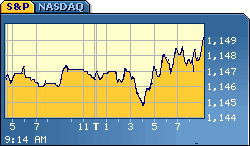EconWeekly has an interesting take on the ingenuity of new lending facilities at the Federal Reserve. The Fed's new tools are outside traditional channels of open market operations and include the Term Discount Window Program (TDWP) and the Term Auction Facility (TAF). These programs are intended to provide liquidity and ease money market strains in the interbank market as witnessed by a blow out of short term rates like LIBOR. The downside of this actions is reflected in the quality of the balance sheet of the Federal Reserve. According to EconWeekly there is considerable concern that the Fed will run out of valuable Treasury securities and will replace them with questionable collateral. This could overwhelm the Fed's balance sheet and consequently the value of the government’s debt obligations.
Here is EconWeekly's take:
In 2007 the Federal Reserve made an effort to provide liquidity through channels other than open market operations and repos. To that effect, it created the Term Discount Window Program (TDWP) and the Term Auction Facility (TAF).
Loans to commercial banks and primary dealers, from one facility or another, represent now a much larger fraction of assets. The fraction of Treasurys has declined to 53% from 87%.
The concern now is that the Fed may run out of Treasurys. In theory, the Fed could continue extending loans indefinitely. The problem is that, with no Treasurys left over, the Fed would not be able to offset expansions of the monetary base, as it’s been doing for months. Reserve balances would balloon, pushing down the federal funds interest rate to zero. So the Fed is now pondering the following alternatives:
1) Purchase mortgage-backed securities directly. The Fed could finance such purchases by selling Treasurys, and in that case reserve balances would not be affected.
2) Have the Treasury issue more debt than it needs and deposit the cash at the Fed. The Fed would use that cash to purchase Treasurys. While lending conditions don't improve, the new funds would soon turn into loans to banks. This would change the way we view sovereign debt. With this plan, the value of the government’s debt obligations would become contingent on the portfolio of dodgy securities that the Fed accepts as collateral.
3) Let the Fed issue its own debt. The Fed would use the funds to purchase securities or make loans.
4) Remunerate reserves. As Greg Ip explains, “if the Fed paid, say, 2% interest on reserves, banks would have no incentive to lend out excess reserves once the federal funds rate fell to that level.”.... It would also reduce the amount of inter-bank lending, as banks would keep more of their cash in their safe-deposit box at the Fed. That lending would be replaced by loans from the Federal Reserve.
source: The Fed's new tools (II)
EconWeekly
http://www.econweekly.com/2008/04/feds-new-tools-ii.html
Source:Fed Seeks Approval to Pay Interest to Banks
GREG IP, WSJ, May 7, 2008
http://online.wsj.com/article/SB121011673771072231.html
Thursday, May 8, 2008
New tools at the Fed - curse or blessing?
Posted by
Fred
at
1:07 PM
![]()
Subscribe to:
Post Comments (Atom)



No comments:
Post a Comment